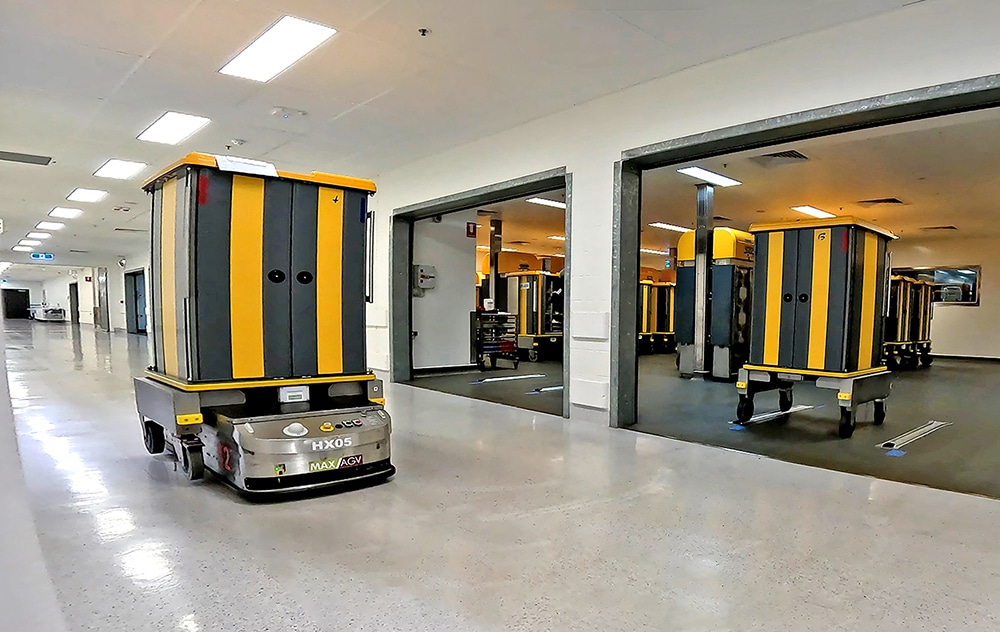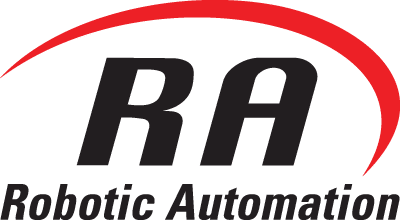The Royal Adelaide Hospital implements Automated Guided Vehicles (AGV) to aid operations.
June 24, 2023
We accepted the challenge presented to us by the Royal Adelaide Hospital. This challenge was to modernise their Hospital AGV System (Automated Guided Vehicle) in a fully functioning and active hospital of 800 beds.
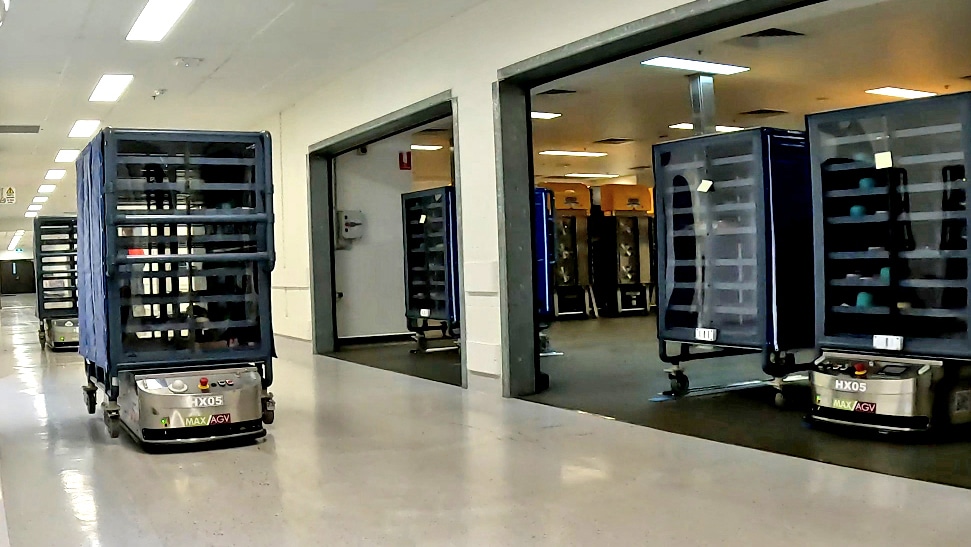
What were the Hospital AGV System upgrade requirements?
A life cycle upgrade was needed for the Royal Adelaide Hospital’s Automated Guided Vehicle system consisting of a fleet of twenty-five trolley delivery robots. This fleet was located at the RAH with the existing AGV Control System having limited support from the previous supplier.
Hospital AGV systems had progressed since their first application at the Royal Adelaide Hospital. They now use Windows-based systems meaning the control software and hardware integration is easy to setup and edit. RA Health provided project consultancy from initial concept, through to design, implementation, and closure stages.
MAXAGV confirmed that the existing AGV could be converted to the MAXAGV control hardware, retaining the existing essential hardware, drive, etc. This was a cost effective solution as the existing AGV fleet could be upgraded at minimal expense. This also resulted in an increase to the system lifespan and reduced ongoing running costs.
RA Health accepted our tender. They began the task of transforming twenty-five AGVs and the control system at the Royal Adelaide Hospital. This project posed a major challenge, as the hospital had to stay open and functioning 24/7. This was necessary, as 800 patients relied on the AGV system.
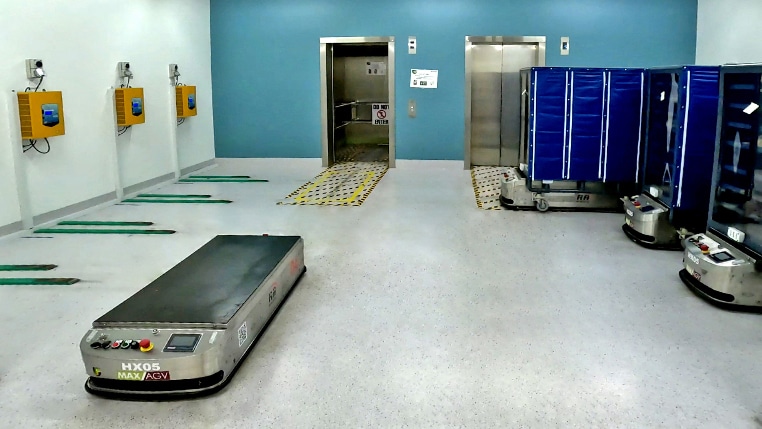
What Challenges did we need to overcome while upgrading a live Hospital AGV System?
A risk assessment was conducted at the start of the project. High-risk activities were addressed through a pre-work strategy, which minimized disruption to the hospital’s daily operations. All goals were met on time, or even ahead of schedule.
The hospital was required to maintain business as usual while the work was performed with minimal disruption to normal operation. The RA Health and RAH project teams created a plan to run separable portions in parallel during the conversions. This reduced the need for manual labour assistance.
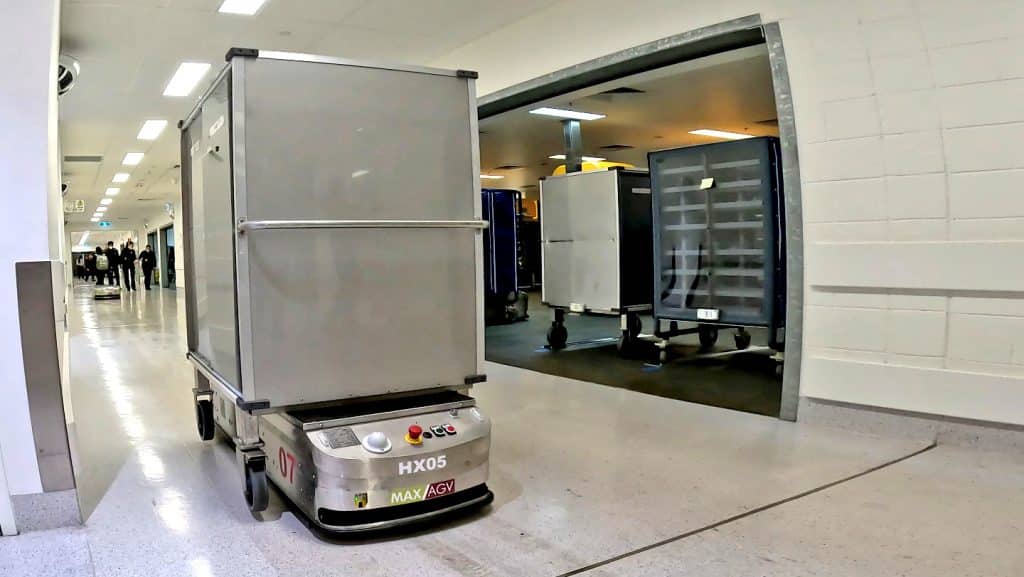
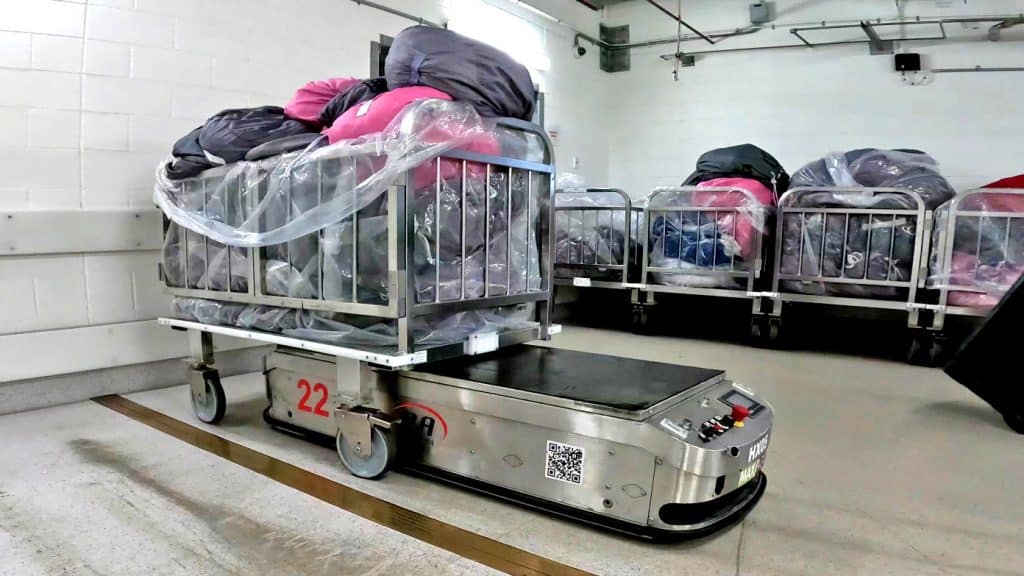
What did the final solution look like?
A 24 hour process was required to minimise the duration of the project and any inconvenience to normal hospital operation.
The solution was to convert 25 of the existing AGVs with the new MAXAGV hardware and control system. During the conversion, EOL equipment was removed. The project was performed in two (2) separable portions to reduce overall risk to project CSSD and main hospital.
RA Health had a team of technicians from all over Australia to assist with the conversions and onsite commissioning. MAXAGV provided remote or onsite support during the duration of the project. This was a 24 hour process to minimise the duration of the project and any inconvenience to the hospital.
The MAXAGV platform was used to recreate the control system and information. It also enabled new communication to existing equipment, such as lifts, WAGO I/O blocks, and other devices.
Half of the AGVs were converted and commissioned by a night shift team to reduce the impact on hospitals operations. The existing AGV system was not being used during this process. This meant there were two AGV systems running parallel with control methods implemented to allow this hybrid scenario.
The first step was to convert the five (5) AGVs that serviced the CSSD which was achieved successfully.
The project implementation was very successful with the cutover reporting no issues or impact to hospital operations. After the cutover the remaining AGVs were converted and introduced into the system.
The MAXAGV system enabled user management through Windows credentials. This gave the company’s users access to their client computers via their active directory account. This provided extra security and local policies.
The Factory Acceptance Test (FAT) and Site Acceptance Test (SAT) were successful on the first attempt with no issues recorded.
“One of the best executed projects I have been involved in whilst working for Downer”
Andrew Elkin – Head of Technology & Innovation, Downer Group
What equipment was used in the final solution and what are their key Features & Benefits.
MAXAGV Sonix V4 Controller with an MCU-5 manual hand control unit
- Increased Lifespan
- The RA Health team now have the ability to adjust or add stations, move routes and optimise traffic. This provides flexibility and capacity.
- Critical Support and Servicing – Multiple technicians available across multiple states, and high-level support from MAXAGV.
- Reporting Functionality and Analytics – High use of standard graphic template.
- Battery Charging Segments – Live battery status
- Transport Handling – The new MAXAGV system automatically changes the destination of the AGV anywhere on the layout to minimise unproductive missions.
- RFID Register Interface – Setup within MAX client to review / edit / add tags into the register. A user-friendly GUI for AGV controllers.
- Scheduled Queuing Interface
- Increased Control
